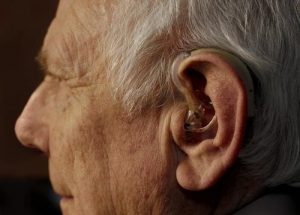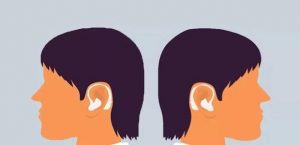When Phelps won the 2016 gold medal news at the 23 Rio Olympics, people began to have great interest in the legendary athlete and wondered how he realized the secret of rewriting the Olympic swimming history! I also wondered if the swimming champion will continue to improve. The Chinese Audiology Network has learned that German researchers have developed a new sound system that will allow Phelps and other swimmers to swim faster. Researchers at the University of Bielefeld Cognitive Interactive Technology Group (CITEC) announced that they have developed a “swimming and hearing” system that can help swimmers improve their swimming skills. According to the China Audiology Network reported in European journalists, this system can expand the range of athletes’ perceptions, and athletes will hear the water pressure flowing through the body in real time, thus changing the way of exercising and improving their performance. In this way, swimmers can improve their swimming skills and gain the advantage that others don’t have, that is, to monitor swimming by listening.
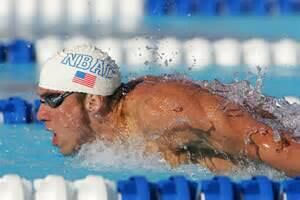
The University of Field’s “Research TV” program introduces this new system: all athletes will see their hands move and feel the water slide over the hand, which helps them understand their movement speed. But after hearing training, swimmers get more information about speed and agility while swimming.
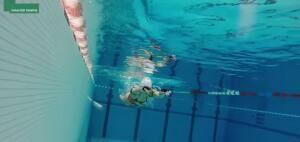
“Most swimmers ignore a very important factor: the pressure of the water around the body changes,” said Dr. Thomas Herman of CITEC. The acoustic researcher is studying how to turn data into sound and benefit people who hear it. This technique is called “auditory”, a process that systematically transforms accurate data into audible sounds and noise. “In this project, we use water flow pressure as a data source,” said Herman, director of the CITEC Environmental Intelligence Research Group. “We transform the changes in water flow pressure into sound in real time and then play it through the headphones worn by the athletes so they can change the way they move based on the information they hear.”
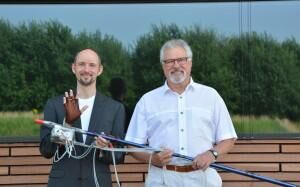
For the swimming auditory research project, Herman is working with Dr. Bodo Uggen, from the Department of Psychology and Sports Science. As a biomechanicist, Wugenlezhi mainly studies how humans control their movements, especially when swimming.
“If a swimmer can ‘hear’ the change in water flow pressure, he can make better judgments, such as how to generate more momentum when consuming approximate energy,” Uganle said. A system gives swimmers more ways to perceive their movements in the water.”
Wugenlezhi himself also tested the swimming auditory system. “I am very surprised that the auditory system responds well to the water flow,” he said, adding that the system is easy to understand. “After the start of the play, you will hear the sound immediately, including the sound of stretching your hand or changing the position of your hand. This system will bring new training to athletes.”
Uganle said that the system can help swimmers develop homophones or melody that correspond to their highest skill. For example, if a swimmer completes a turnback at high speed, he can re-imagine and review this successful turnback using the melody generated by the swim. This kind of mental training may make swimmers achieve good results in the competition. A field trial was conducted in 2015 9 month, and professional athletes confirmed that the system improved their swimming skills after testing.
“Our ears are very good at recognizing changes in rhythm and rhythm. In this way, swimmers can find their own rhythm and improve their swimming skills through this rhythm,” said Thomas Herman.
The swimming hearing system consists of two gloves with a thin tube sleeve that is held between the fingers for sensing pressure. Athletes need to wear gloves while training. The tubing sleeve is connected to a measuring device that is connected to the athlete through the data line while swimming. The measuring device transmits the water pressure related data to a laptop, and a specially customized software senses the data – turning the information into sound. “For example, for repeated hand movements, the system can convert the pressure of rising and falling water into a rising or falling pitch,” Herman said. Other auditory settings, such as symmetry and stability, can also be activated if needed.
The sound is transmitted to the swimmer in real time through the headphones. After the athlete adjusts an action, the subsequent sound changes are heard in real time. Through the water flow pressure auditory system, swimmers can try different swimming positions and make corresponding adjustments. Because the coach also hears the sound through the speaker, it can be guided not only by observation, but also by the sound and rhythm of the athlete’s sound (such as “spreading your arm so that the pitch can rise quickly”).
Hermann and Uganlech are working with Professor Daniel Chisarini, a researcher in the Department of Information Engineering at the University of Pisa, Italy, who invented a measuring device for analyzing water flow pressure data. Researchers want to continue to refine existing prototypes, and they are working on a stand-alone system for swimmers to wear. According to the researchers’ plans, they will work with the swimming club to apply the new auditory system to long-term training programs.
Link:Audiology and the Olympics: Sound Assisting Swimming Competition
REF: Hearing aids China, Hearing Loss, Digital Hearing AidsThe article comes from the Internet. If there is any infringement, please contact [email protected] to delete it.


